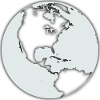Article
Today I will name some well-known brands and their history in the WW2
"Fanta"

One of the best-known brands of soft drinks of our era, refreshing and rich (They don't pay me for advertising
How did his story begin?
In 1940, for the WW2, Max Keith, that at that time he was running the Coca-Cola company in Germany, he had problems with the US government to obtain the concentrate of extracts used to create this soft drink. In order to continue operating and not be forced to close, the factory managers decided to create a new beverage that could be produced with the machines they had, but without the Coca-Cola syrup. And what could they find during the war? Milk serum, and the new soda was based on that.
For that, he separates the Coca-Cola companies to make them independent and thus continue to prosper.
It's corious where the name originated: The name Fanta was suggested by a veteran company salesman, Joe Knipp. His idea came thanks to a contest that the company promoted among German employees, to name the new product, in which Keith asked them to let fly his "Fantasie" (fantasy in German). Upon hearing that Knipp says: ¡Fanta!
Now go with other brand:
Porsche

A well-known German brand of sports cars.
How did his story begin?
Ferdinand Porsche, the creator, he present his electric car of 4 electrics motors Daimler-Porsche,he drives those cars in races that he participate, in 1906 he becomes technical director of Austro-Daimler. Porsche won in 1910 the Prinz-Heinrich Fahrt with an Austro-Daimler, occupying another of their cars the 2nd place. Later he was promoted to general manager. In 1922 the Sascha wins the famous Targa Florio in their class (4-cylinder engine and 1.1 liters).
Porsche thinks for a long time about the construction of a good quality and popular car, That it was not a traditional car that was used. his desire could materialize thanks to the order received by the National Socialist administration during the year 1934. Thus in the project workshop of Zuffenhausen (Stuttgart) was born the first Volkswagen test prototype called "V1", this was followed by other prototypes like the "V3" and finally the "VW 30". Then in 1938 when the war was about to start, the plans to mass produce the Volkswagen Type 1 were stopped, being manufactured in 1940 a military version of it.
During the Second World War, the Porsche study dealt with the design of war material from both the Maus tank and one of the two versions of the Panzer VI Tiger Ausf turret. B, or the amphibious and all-terrain version of the Volkswagen (Kübelwagen).
The Allied bombings forced the transfer of the Porsche from his facilities in Zuffenhausen to Gmünd, Austria, in 1944. In 1945, after the war, as part of war reparations, VW was offered to the French. However, the objections of the French industry didn't carry out the transfer. Ferdinand Porsche, together with his son Ferry and his son-in-law Anton Piëch (grandfather of Ferdinand Piëch, future president of VW), were arrested and imprisoned in a medieval prison in Dijon, France, for having used slave labor in their Nibelungenwerke factory where it produced military vehicles for the Germans. Ferry would be released soon from the sentence, but Ferdinand and Piëch were condemned 2 years without previous judgment. During that confinement, he was forced to work on designs for Renault, from which the future 4CV model would emerge.
His son Ferry Porsche tried to recover the company, also arranging other vehicles and engines, and making prototypes for third parties, such as the 360 competition Cisitalia, with 4-wheel drive and a 1.5 supercharged engine for the Italian industrialist Piero Dusio, a project that was revised by Ferdinand on his release from prison and that filled him with pride for how well his son's work was done.
Ferry would present the first model of the current Porsche brand, the 356, in June 1948, based on the VW. The first benefits of the vehicle were used to rid his father of prison. The 356 would initially be manufactured by hand in the Austrian town of Gmünd, and later, in 1949, the Porsche family and the production would be moved to Stuttgart.

Maus

There were some tanks Tiger II and King Tiger designed and produced by Porsche
Hugo Boss

Hugo Boss started his clothing company in 1924, in Metzingen, a small town south of Stuttgart, where it is still based. However, due to the economic depression in Germany, Boss was forced to declare bankruptcy. In 1931 he reached an agreement with his creditors, and was left with six sewing machines to start over. The same year, he became a member of the National Socialist Party and a sponsoring member (Förderndes Mitglied) of the SS (Schutzstaffel). Later it was said that he had joined the party because of his promise to end unemployment.
He joined the German Labor Front (Deutsche Arbeitsfront) in 1936, the Reich Air Protection Association (Reichsluftschutzbund) in 1939, the National Socialist Welfare Organization (Nationalsozialistische Volkswohlfahrt) in 1941. His sales increased by 38,260 Reichmarks in 1932 to more than 3,300,000 Reichmarks in 1941, while his profits increased in the same period from 5,000 to 241,000 Reichmarks. Although he claimed in a 1934-1935 advertisement that he had been a "supplier of German uniforms since 1924", supplies have been probable since 1928-1929 and certain since 1934, when he became a Reichszeugmeisterei with an official (licensed) suppliers of uniforms to the Sturmabteilung, the SS, the Hitlerjugend, the Nationalist-Socialist Bodies Corps and other party organizations.
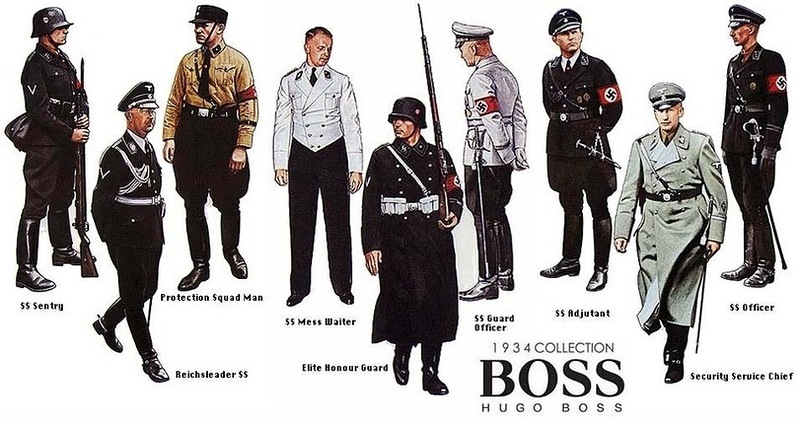
Img that explain better
To satisfy the demand in the last years of the war, Boss uses 30 to 40 prisoners of war and about 150 forced laborers, from the Baltic States, Belgium, France, Italy, Austria, Poland, Czechoslovakia and the Soviet Union. According to the German historian Henning Kober, the directors of the company were "confessed Nazis" and "great admirers of Adolf Hitler", and Hugo Boss had in 1945 in his apartment a photo of himself with Hitler taken in the last retreat of this in Obersalzberg.
In a denazification trial of 1946, based on his early affiliation to the party, his financial support for the SS and the uniforms handed over to the German labor party, even before 1933, Boss considers himself an "activist" and a "defender and beneficiary of national-socialism." He was stripped of his right to vote, his ability to run a business and was imposed a very strong penalty of 100,000 marks. He died in 1948, but his business survived.
In 1993 Hugo Boss created Baldessarini as his high-end luxury brand for men, currently also has two fragrances under this brand.
In 1997, the company appeared on a list of inactive Swiss accounts, which prompted the publication of articles highlighting Hugo Boss's involvement with the National Socialists. In 1999, American lawyers filed lawsuits in New Jersey, on behalf of the survivors or their families, for the use of forced laborers during the war. The company didn't comment on these demands, but reiterated an earlier statement that didn;t want to "close our eyes to the past, but rather to address the issues openly and frankly."
In December 1999, an agreement was reached between the German government and a group of American lawyers, Jewish groups and the United States government, to establish a fund of US $ 5.1 billion, financed equally by the German industry. and the German government, to compensate the slave workers used by the Germans in World War II. Hugo Boss agreed to participate in this fund, for an amount that was estimated by some sources as around € 752,000, while others considered that the company "finally paid the absolute minimum in the compensation fund".
Note: It wasn't easy to me wrote all this in English, any mistake in the article that you found, you can write it in the comments, thank you for your attention.
Previous article:
Historias de la Segunda Guerra Mundial #6 "Marcas" (Español) Parte 2 (8 years ago)
Next article:
Histories of WW2 #6 "Brands" (English) Part 2 (8 years ago)
About the game:

USA as a world power? In E-Sim it is possible!
In E-Sim we have a huge, living world, which is a mirror copy of the Earth. Well, maybe not completely mirrored, because the balance of power in this virtual world looks a bit different than in real life. In E-Sim, USA does not have to be a world superpower, It can be efficiently managed as a much smaller country that has entrepreneurial citizens that support it's foundation. Everything depends on the players themselves and how they decide to shape the political map of the game.
Work for the good of your country and see it rise to an empire.
Activities in this game are divided into several modules. First is the economy as a citizen in a country of your choice you must work to earn money, which you will get to spend for example, on food or purchase of weapons which are critical for your progress as a fighter. You will work in either private companies which are owned by players or government companies which are owned by the state. After progressing in the game you will finally get the opportunity to set up your own business and hire other players. If it prospers, we can even change it into a joint-stock company and enter the stock market and get even more money in this way.
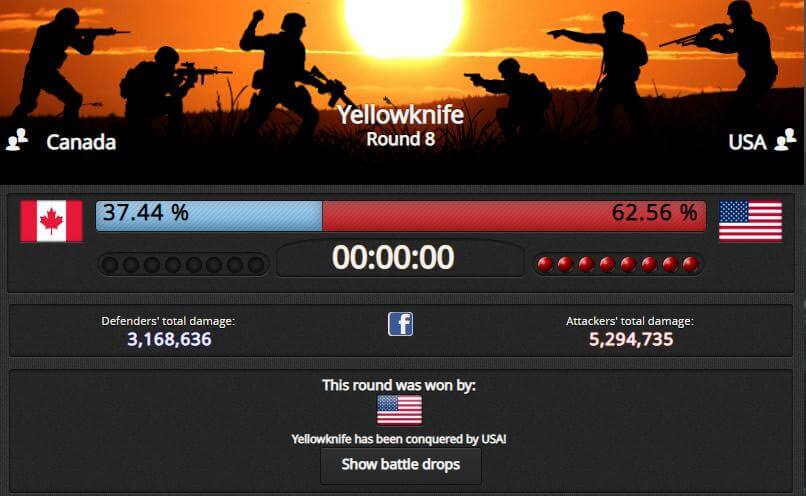
In E-Sim, international wars are nothing out of the ordinary.
Become an influential politician.
The second module is a politics. Just like in real life politics in E-Sim are an extremely powerful tool that can be used for your own purposes. From time to time there are elections in the game in which you will not only vote, but also have the ability to run for the head of the party you're in. You can also apply for congress, where once elected you will be given the right to vote on laws proposed by your fellow congress members or your president and propose laws yourself. Voting on laws is important for your country as it can shape the lives of those around you. You can also try to become the head of a given party, and even take part in presidential elections and decide on the shape of the foreign policy of a given state (for example, who to declare war on). Career in politics is obviously not easy and in order to succeed in it, you have to have a good plan and compete for the votes of voters.
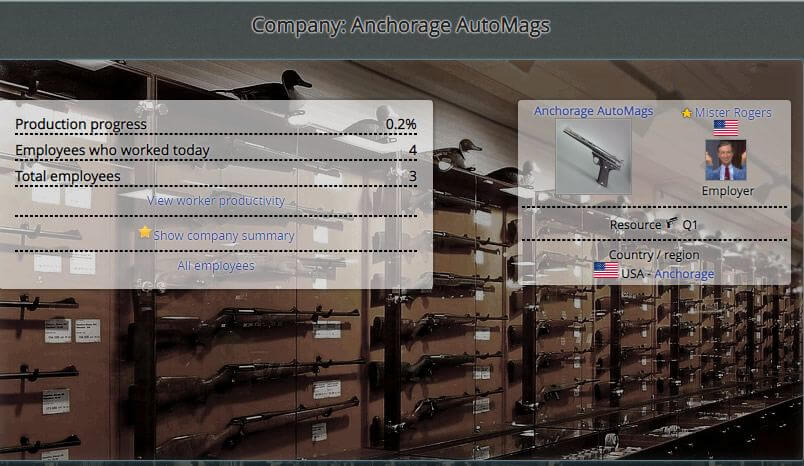
You can go bankrupt or become a rich man while playing the stock market.
The international war.
The last and probably the most important module is military. In E-Sim, countries are constantly fighting each other for control over territories which in return grant them access to more valuable raw materials. For this purpose, they form alliances, they fight international wars, but they also have to deal with, for example, uprisings in conquered countries or civil wars, which may explode on their territory. You can also take part in these clashes, although you are also given the opportunity to lead a life as a pacifist who focuses on other activities in the game (for example, running a successful newspaper or selling products).
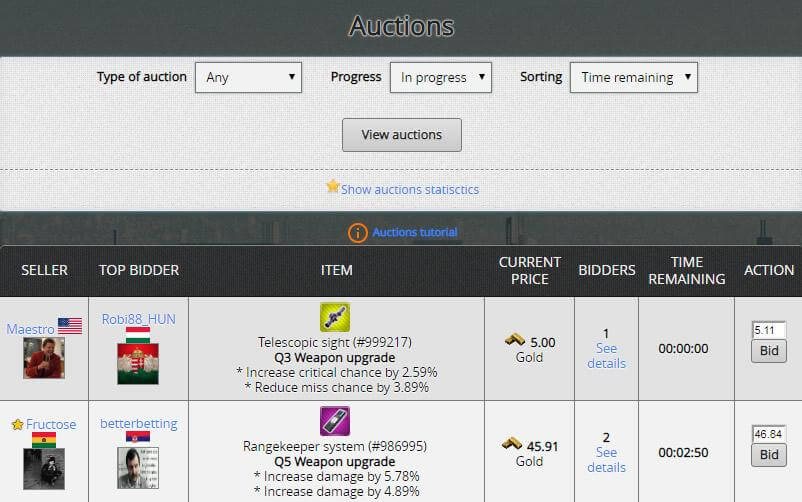
At the auction you can sell or buy your dream inventory.
E-Sim is a unique browser game. It's creators ensured realistic representation of the mechanisms present in the real world and gave all power to the players who shape the image of the virtual Earth according to their own. So come and join them and help your country achieve its full potential.
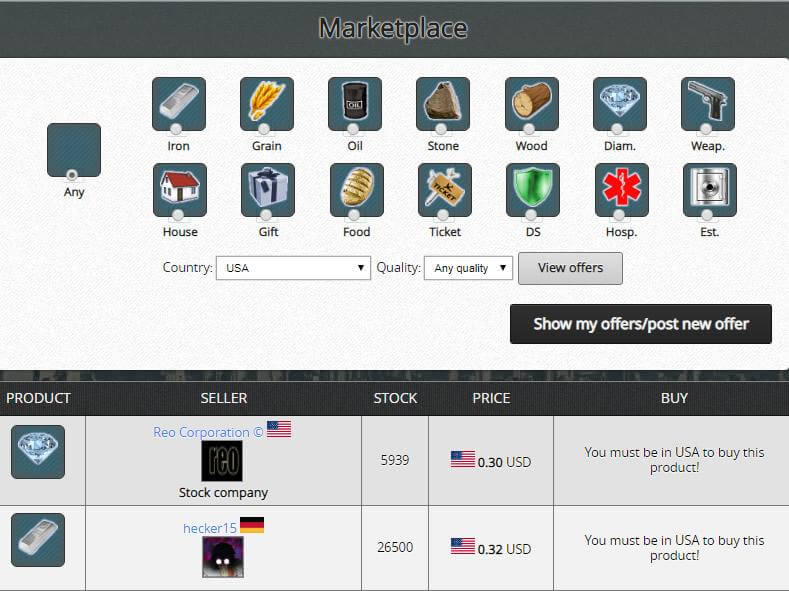
Invest, produce and sell - be an entrepreneur in E-Sim.
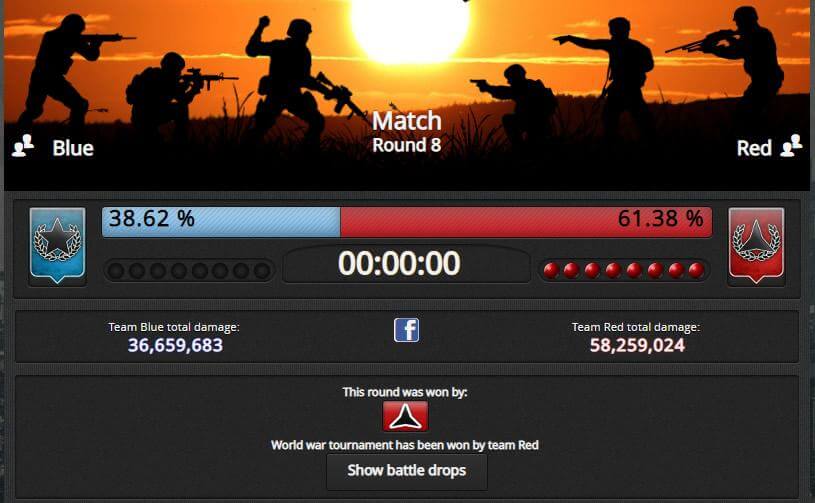
Take part in numerous events for the E-Sim community.
